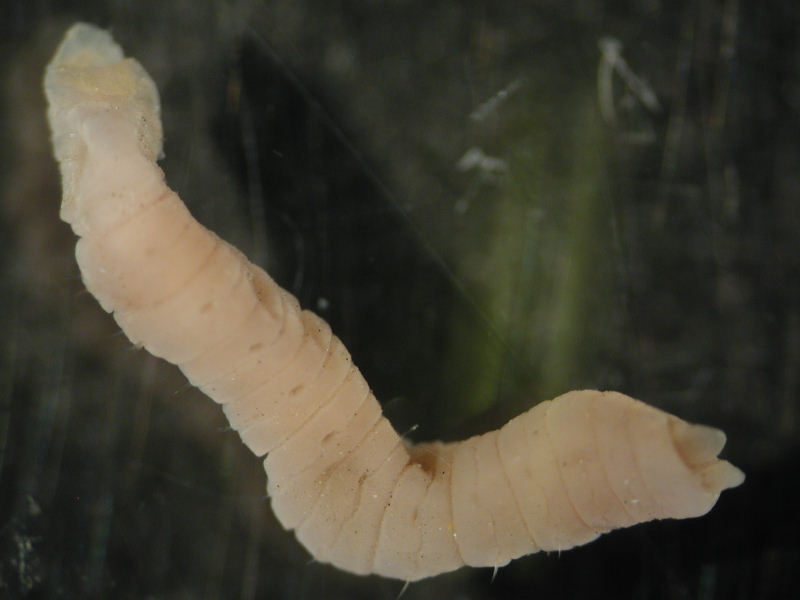A bristleworm (Notomastus latericeus)
Distribution data supplied by the Ocean Biodiversity Information System (OBIS). To interrogate UK data visit the NBN Atlas.Map Help
| Researched by | Edward Mayhew | Refereed by | Admin |
| Authority | Sars, 1851 | ||
| Other common names | - | Synonyms | - |
Summary
Description
Recorded distribution in Britain and Ireland
Recorded from the various locations around the British Isles.Global distribution
Found on European coasts from the Arctic to the Mediterranean.Habitat
Notomastus latericeus is found from the lower shore to deep sublittoral habitats, in clean or muddy sand. It is also often found amongst seagrasses.Depth range
-Identifying features
- Between 100 to 150 segments, and between 15 and 30 cm long.
- Anterior region of 12 chaetigers with reticulated appearance, all of which have chitinous bristles (capillary chaetae) projecting from the parapodium.
- Paired genital pores on the dorsal surfaces of many anterior segments of posterior region.
- The posterior most division of the three divisions of the body (pygidium) terminates in a membranous flap.
- Simple gills, formed by extensions of the rami along most of the posterior region.
- Branchaie may be present.
Additional information
No text enteredListed by
- none -
Bibliography
Fauchald, K., 1977. The polychaete worms. Definitions and keys to the orders, families and genera. USA: Natural History Museum of Los Angeles County.
Hayward, P.J. & Ryland, J.S. (ed.) 1995b. Handbook of the marine fauna of North-West Europe. Oxford: Oxford University Press.
Howson, C.M. & Picton, B.E., 1997. The species directory of the marine fauna and flora of the British Isles and surrounding seas. Belfast: Ulster Museum. [Ulster Museum publication, no. 276.]
JNCC (Joint Nature Conservation Committee), 1999. Marine Environment Resource Mapping And Information Database (MERMAID): Marine Nature Conservation Review Survey Database. [on-line] http://www.jncc.gov.uk/mermaid
Stachowitsch, M., 1984. Mass mortality in the Gulf of Trieste: the course of community destruction. Marine Ecology, Pubblicazione della Statione Zoologica di Napoli, 5, 243-264.
Datasets
NBN (National Biodiversity Network) Atlas. Available from: https://www.nbnatlas.org.
OBIS (Ocean Biodiversity Information System), 2025. Global map of species distribution using gridded data. Available from: Ocean Biogeographic Information System. www.iobis.org. Accessed: 2025-06-20
South East Wales Biodiversity Records Centre, 2018. SEWBReC Worms (South East Wales). Occurrence dataset: https://doi.org/10.15468/5vh0w8 accessed via GBIF.org on 2018-10-02.
Citation
This review can be cited as:
Last Updated: 26/10/2005



